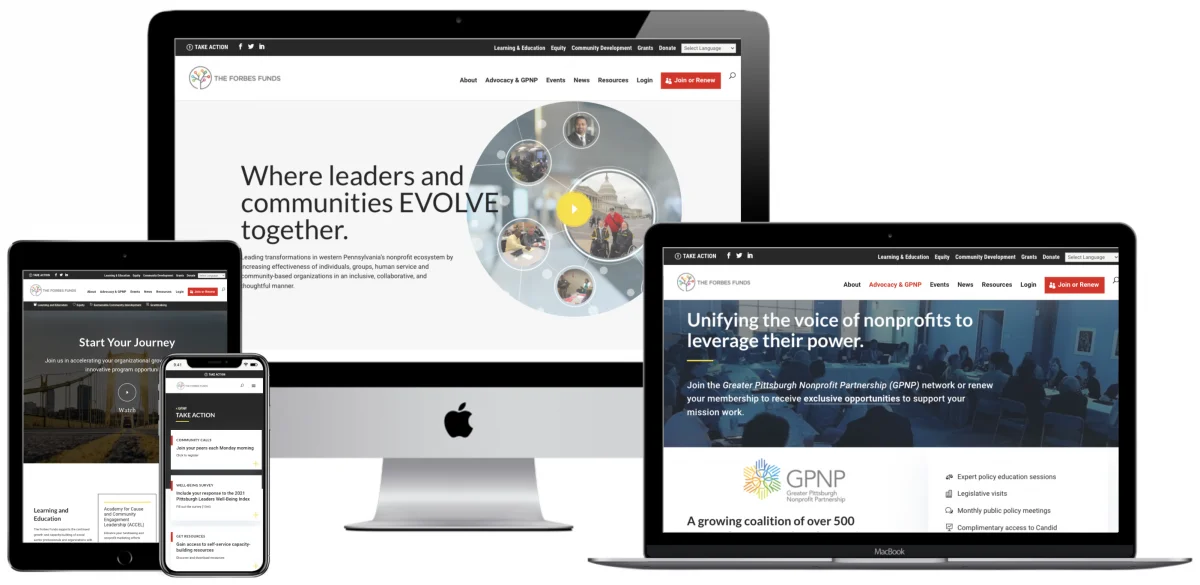In this last decade of web design, we saw a whole lot of acronyms: AR, VR, AI, AMP, and many others. This means that if you aren’t already on board with those, that will be your first order of business going into 2020! But on the more visual aspects, some web designs have gotten more “creative”, using vibrant illustrations instead of stock (awkward smiling office stock photos, anyone?), removing the grids, embracing bold color schemes or removing color schemes altogether (hello, black and white!), and trialling asymmetrical layouts. Machine learning has made websites smarter (but my goodness have you tried mobile browsing with chatbots, eCommerce wheels spinning, and other pop-ups! No, thanks!). In 2020, you’ll see tech and design merge further into new realms and you’ll see ways in which browsing is catching up to the way we actually use the web (on our mobile devices). Which trends are here to stay in 2020 and which trends will be overhauled?
1. Bringing on the serif!
Serif fonts are often reserved for print mediums, but some bold web designers are bringing serifs on screen. In the past, it seems that those fussy flicks (think of the tail on the letter ‘a’ as an example) were more difficult to read on-screen, but it seems that some web designs are incorporating these fonts to good effect. In the past, web designers felt that sans-serifs were best for low-res displays, children, when using lots of colors, or low-contrast patterns, and when the text was narrow or small, but with mostly mobile browsing these issues are all but disappearing. At the end of the day, no matter if you use a serif or sans-serif, it has to be readable.
2. More chatbots
Have you ever messaged a business on Facebook and you get a quick chat bot message? What about visiting someone’s website and “Alan” was up for a chat to tell you all about the products and services of his business? Facebook started developing bots via messenger app and now they are everywhere! In 2017, there were over 100,000 active bots and I dread to think what those numbers are now.
Sephora, Whole Foods, National Geographic, and others have been using them in their marketing. The Sephora assistant increased their booking rate by 11% and the average incremental spend of in-store client service is now $50.
Personally, I’m not the biggest fan of bots–not that I’ve had a negative experience with one–but as they get truly more conversational as technology advances, they may prove to be helpful especially in a Q&A situation. Have you had a positive experience with a chatbot? Do you find them helpful?
3. Utilizing more negative space
“Negative space” is a fancy word designers use for “whitespace.” So, in web design, there will be more space between options to create visually clean spaces. Whitespace and open-page layouts are more mobile-friendly and easier for people to use. They may be less design-heavy but they help with website visitor’s requirements such as content scanning. Readers can stay focused on the page without being overwhelmed by multiple color elements or moving imagery. That’s not to say design isn’t incorporated by it’s much more purposeful. The Asana website uses lots of negative space to guide the user’s attention on one task at a time. In this case, it’s getting users to sign up to their product offerings. So, if you have specific marketing goals or actions you want your users to take, you may need to incorporate more negative space into your 2020 design.
4. Mobile comes to desktop
There are more mobile browsers than desktop users now, which means that instead of your mobile-design being carried over from your desktop design, your mobile-design will be carried over to your desktop. In other words, mobile is now influencing the desktop design instead of the other way around, which is influencing modern web design trends. Prior to this time hamburger menus were only on mobile designs, but now you see them on desktop designs as well as large typography.
Another influence of mobile to desktop is that sticky elements may stay firmly at the bottom of the page instead of disappearing when you scroll. Some recent mobile design is placing navigation and hello bars on the bottom of the page to make them easier to click and access. As people “learn” and become familiar with these designs and grow to expect them, we’ll see a shift towards this type of design element. What other ways do you see mobile design affecting the way desktop websites look and perform?
5. Micro-interactions
Micro-interactions are interactions like on Facebook (think Facebook likes, comments, etc) that show subtle engagements or asking users to perform small, single-task actions (connecting one device to another, liking a post, manipulating a setting). Micro-interactions encourage and foster engagement. What do you think of web design incorporating social-media-like interactions in everyday browsing? Mostly, these interactions will allow you to do functions such as “like” or “clap” a blog post or save it for later and so on. An interesting way to implement this to your website now is using a widget notification (such as Net Qualified) to allow customers to quickly interact with you and give instant feedback so you can provide a more delightful experience.
6. VR videos to showcase products
We still have a little way to go before VR becomes mainstream, but 2020 may be the year. Since VR will be the new way to engage, many companies will want to be the first to implement and showcase this feature. That might look like the ability to pick up and look at a product or do a virtual tour of a house or, as one company is doing it, allows you to test out their swimming pool sizes.
7. Say goodbye to hamburger menus
The hamburger menu was invented in 1989 but became popular in 2009, so it’s been part of our navigating style for over a decade. Can we cope as companies begin to move away from hamburger menus? Many argue that hamburger menus are not user-friendly, they are less efficient and lower discoverability. What the no-bun menu will look like we will see, but web designers will experiment with alternatives. Spotify now uses tab-based navigation and other sites are using a tile-style. What do you think? Will this removal improve the ease of navigation?
8. Smarter personalization
Coca-Cola’s 2014 “Share a Coke” campaign was widely successful. With 250 popular first names printed on cans and bottles, they reached the younger generation in droves (like, selling 250 million bottles). And this happened in the physical-non-digital space. With AI advancements, personalization in 2020 will be possible, offering a tailored online experience for each user. Google is already preparing for this level of personalization with its search journeys and user-intent.
9. Above the fold will become meaningless
Most web designers were taught to keep all the important stuff “above the fold” but new designs including more whitespace are rendering this rule a tool of the past. The old thinking was that users didn’t look at anything if they had to scroll, but with mobile, we are used to scrolling. We don’t want everything crammed in the first third of the page. Users have been scrolling since 2011 when Apple decided to remove the scroll bar from the Mac OS X (as a default) because users didn’t need a reminder that they could scroll on a page. Now, if your users aren’t scrolling, you have to ask why not–is it because your content is missing the mark?
10. Black and white color palettes
Color unifies brand and guides users through an interface with visual cues, but so many websites as we head towards 2020 are opting for monochromatic palettes. Without color, textures and shapes become more prominent. White is clean, negative space and black is bold against it. Black and white websites are striking and when you add color it indicates that that’s a point of interest (like a CTA). What do you think of removing the color from web design? Fad or here to stay?
11. Thumb-friendly navigation
Websites have to be thumb-friendly since they are mostly navigated on mobile devices. Josh Clark in his book Designing for Touch discovered how users held their mobile phones and how their thumb movements should be processed in web design. Navigation will no longer be tailored for you to remove your thumbs and jamb the screen wildly with a forefinger, hoping something will happen; the process will be streamlined for user-experience. Surely, that will help with scrolling and navigation overall? Why didn’t’ something think of this feature sooner?
12. Diversity
Websites are international. That’s why it’s called the “World Wide Web” after all. And since more people now have access to the internet, billions of people from around the world with varying different cultures, ages, abilities, gender identities, and so on, why are so many websites geared only for American and European audiences? Despite the fact that 54% of websites are written in English–with Russian, German, Spanish, French, Japanese, Portuguese, Italian, and Persian making up the majority of non-English websites–users now want to see more diversity reflected. Websites are starting to catch on and embrace more diversity and more representation, moving away from the cheesy grins of white-washed stock photos to more bespoke designs and imagery.
What trends do you see happening in 2020?
Which on the list are you looking forward to and which will be an adjustment? Do you see any other trends happening? Let us know in the comments. If you need any help with web design this year or the next, get in touch with Key Medium today.

Elaine Frieman holds a Master’s Degree and is a UK-based professional editor, educational writer, and former marketing agency content writer where she wrote articles for disparate clients using SEO best practice. She enjoys reading, writing, walking in the countryside, traveling, spending time with other people’s cats, and going for afternoon tea.

